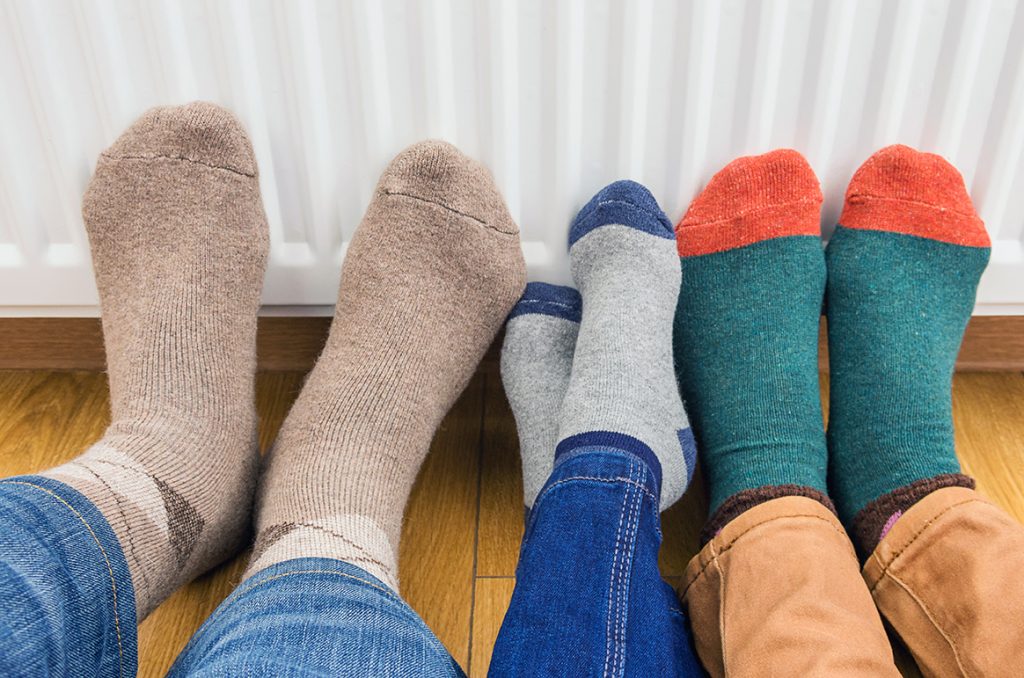12 Tips for Keeping Your Feet Healthy and Comfortable During Winter


If you have issues with your feet and ankles or are otherwise experiencing foot pain, you may be less nimble in icy conditions.
In this post, we’ll share some quick, seasonal tips for avoiding foot injury.
Foot Care for Skiers, Skaters, and Other Outdoor Athletes
We’ll start with a few tips for those who like to engage in winter sports:
- Wear boots that fit properly—and learn exactly what is a proper fit. This is key to avoiding foot and ankle injuries. First off, don’t assume specialty sport boots should fit like regular shoes! For instance, when trying on downhill ski boots, they may feel wrong if you stand normally. But, when you flex forward as you do when skiing, they will fit differently, and you will get a more realistic idea of how they will feel on the slopes.
Whatever footwear your sport requires, spend time consulting with an expert, learn what fit issues to watch out for, and take the time needed to get a good fit. Rushing or settling for less than a great fit can easily result in costly and painful injuries.
- Buy winter-specific socks, potentially in a SmartWool or another high-tech fabric. Some socks are even specially knit to protect your feet during specific activities. In any case, standard cotton tube socks are not going to serve you well if you are engaging in cold-weather sports, so make sure to upgrade during winter.
- To avoid frostbite, remember that proper circulation is key to keeping your outer extremities safe. Make sure your socks, boots, and other winter wear aren’t so tight that they inhibit your blood circulation.
- Lace or latch your footwear correctly. Ice skates and other footwear with adjustable uppers or shafts need to be supportive without being tight. But, if they are loose, it will increase your risk of a sprained ankle. You may need to adjust a few times to find the sweet spot.
How to Protect Your Feet When Walking on Ice
Another seasonal concern is walking on ice without falling and getting hurt. Some advice for traversing ice without slipping:
- Be slow and steady. This may be obvious, but it’s important!
- Take shorter steps. By doing this, you’ll be keeping your feet under your center of gravity and lessen the chance of your feet slipping out from under you.
- Avoid ice that looks like it’s melting; this is often the slipperiest, most dangerous kind of ice.
- Avoid slopes if at all possible. On these surfaces, gravity is not your friend.
- Support your feet with QUICK TAPE. If you have issues with your feet and ankles, including plantar fasciitis, or are otherwise experiencing foot pain, you may be less nimble in icy conditions. While it can’t prevent you from falling, QUICK TAPE can help your feet function correctly, provide extra glove-like support, and let you concentrate on the conditions around you.
Additional Tips for Avoiding Foot Injury This Winter
Finally, here are a few more general thoughts about how to protect your feet from cold weather.
- Change into dry socks as often as possible. This can help you avoid blisters on your feet and many other issues. You might need to plan on going through a few pairs of socks a day and/or rotating them. (One easy and gentle way to dry out socks and other winter gear is to place them over a heat register in your home.)
- Be mindful to avoid chilblains. These painful patches are most likely to occur when your feet are exposed to cold air and then quickly brought into a warm environment. You’ll most likely notice them on your feet, especially areas that are already prone to bunions or calluses. Warm your skin gradually to help avoid them.
- Be on the lookout for “skier’s toe,” which will present as a black toenail with throbbing pain beneath it. The best way to avoid the condition is to make sure your shoes and boots aren’t too tight. If you develop a skier’s toe, see a podiatrist as soon as possible.
We hope these tips help you keep your feet in tip-top shape all winter long!
